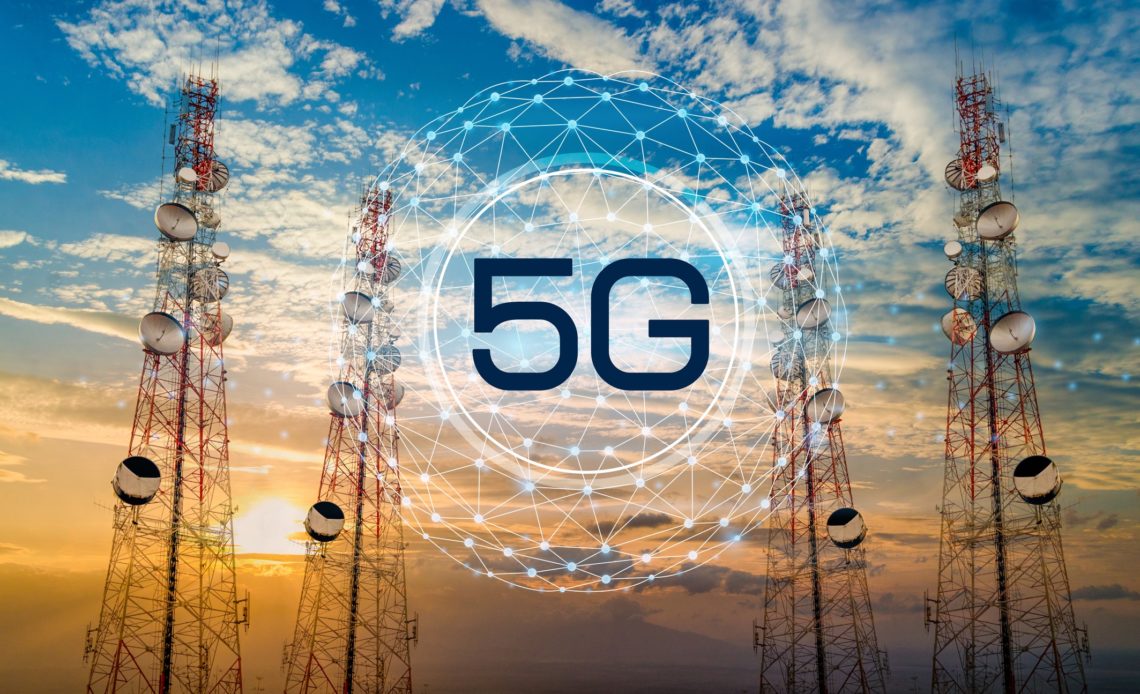
The 2022 Super Bowl sparked a fierce race among mobile operators to win fan attention comparable to the frenetic battle for awards on the sports field. High bandwidth applications supported by high-frequency mmWave radio spectrum played a role in arming the mobile operators as they jostled for fan attention. Multiple angles of the game, replays, and 360 views of the game from several vantage points wowed the fans.
Sports venues are only a start. The scramble extends to large venues to replace legacy DAS networks and the enterprise for high-density applications. In both cases, customers in these domains require extremely high throughput and low latency.
High-Performance applications with mmWave and Massive MIMO
Performance demands on networks are rising exponentially. Software-defined 5G networks help greatly to increase throughput and lower latencies. Deployments at the edge save redundancies in the movement of traffic back and forth from the edge to the cloud.
However, the demand growth from applications, such as gaming and video applications in sports venues, has been relentless. Then there are applications like 3D holograms with haptic features, with the ability to read patients’ pulse and the state of the body, for the remote treatment of the elderly. These applications have only been introduced in countries like Japan, and their bandwidth demand will inevitably increase sharply soon.
Service providers prefer the spectrum below 6 GHz for their propagation and bandwidth characteristics. The US Government has been a leader in encouraging their shared usage to accommodate multiple claimants. The downside of shared usage is the risk of interference with multiple users, which is sought to be mitigated by advanced innovative technologies. The recent tension between airlines and service providers over the shared usage rights of the C-Band spectrum indicates the stakes involved.
Bolstering capacity for 5G cellular communications
5G communications are encouraging an altogether different method to expand capacity with mmWave, in the high frequency 30 GHz and 300 GHz range, together with Massive MIMO (multiple-input and multiple-output) over the same radio channel. Softbank was the first to install them, and the pace accelerated in 2020 with nationwide deployments with Verizon Ultra-Wideband.
In essence, the splitting of data flows into narrow beams of parallel data streams boosts the capacity to process gargantuan levels of traffic. In the early days, two to four antennas were used on both sides—transmission and receivers. With 5G NR, the number of antennas is typically 64 on each side, with the more advanced installations in hundreds.
High-frequency mmWaves are known for their very narrow width but extremely high bandwidth. The upside is that they form shafts that have the potential to be directed from one end to another under controlled conditions.
Historically, the utilization of mmWave has been low because of the loss of their signal strength beyond short distances and the tendency to be deflected by objects such as large buildings. The quality of communications is greatly increased when the data stream flows between two antennas, a transmitter at one end and a receiver at the other. As a result of the targeting of beams, interference is reduced, capacity boosted, and communication secured.
Diminishing returns set in as the number of antennas increases. Interference between beams is common, energy consumption increases enormously, and targeting is harder for moving devices and assets in mobile communications. Beamforming is a programmable way to cluster signals headed in the same direction to reduce interference and power consumption. Additionally, it redirects signals for mobile communications.
5G mmWave private networks for dense traffic
As part of its Ultra-Wide band offering, Verizon’s private network combines a private core, an indoor cell site, and a MEC with mmWave for very high throughput, low latency, and secure applications. WeWork has contracted to install Corning’s indoor cell sites at ten of its locations. Corning’s cell-site has an integrated baseband unit, radios, and antennas for indoor sites for placement with MECs.
Qualcomm partnered with Corning on bringing mmWave service indoors. Verizon is collaborating with Samsung to use small cells to transport beams. The initial trials used 64T64R Massive MIMO radios with C-band spectrum that support digital dynamic beamforming. Currently, Verizon has merged C-band with mmWave in a single connection as it moves away from communication in central cities to a greater focus on in-building networks. Small cells spread over facilities in offices, shopping malls, and other types of venues, allowing the maintenance of the quality of the signal.
In collaboration with IBM and Red Hat, Samsung has installed private networks at its plants in Austin, Texas, and Suwon, South Korea, achieving download speeds of 8.5 Gbps in 2020. The 5G mmWave private network addresses use cases such as massive connected IoT, robot control monitoring, and worker virtual training. In Austin, the private network used for manufacturing-focused 5G innovation zone in the U.S includes industrial IoT for automated material handling and mixed reality for training.
Conclusion
mmWave spectrum, in combination with massive MIMO, is on the cusp of widespread commercial deployment in private networks. A range of technical wrinkles in the technology has been ironed out. Beamforming brings programmability and improved economics for broader adoption. It will set the stage for a whole new crop of applications, such as telehealth.





